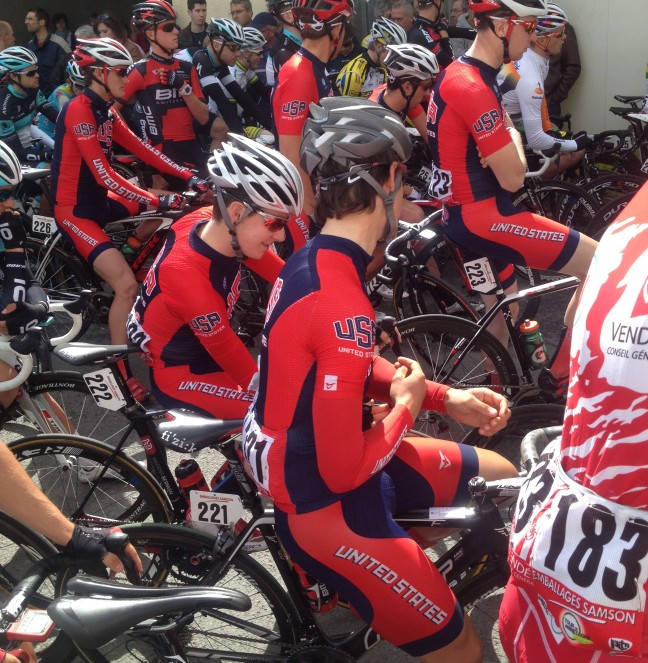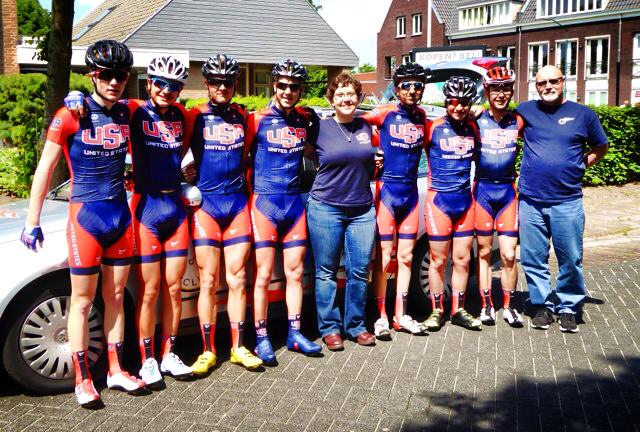Soigneurs may very well have the most thankless job in professional cycling. They take care of the grunt-work details necessary to keep a pro team running smoothly while remaining mostly anonymous. Sara Clawson is a sports massage therapist in Greensboro, North Carolina who’s making inroads to a soigneur career. This spring, she spent two months working as a soigneur with the US elite junior team at USA Cycling’s training center in Sittard, Netherlands. Over the next month, Sara’s writing (originally posted on her blog) will shed some light on the “swanny life†as she recounts her experience traveling around Europe working with the next generation of American professional road cyclists. In part three, Sara explains the nitty-gritty of a race weekend in France as the juniors and U23s do their best to perform at pro-tour level.
Working a major race as elite cycling team staff is not for the faint of heart, and I am coming to understand why the turnover in the industry is comparatively low: people who aren’t up to the rigors of the work for whatever reason burn out quickly, and the few who make the cut tend to become career team staff. I’m not sure who works harder: mechanics or soigneurs — both jobs require long hours of exhausting work.
The Tour de Bretagne was a UCI 2.2 stage race, which means a limited number of national teams were invited (in this case, two: the USA team, and the Australian national team) along with European continental teams, pro development teams, and pro tour teams. It’s a very high-level race in which stage winners and riders high in the overall finish ranks have historically continued on to successful professional careers. The race consisted of seven stages between 145 and 200 kilometers over challenging terrain in the rural northern coastal country of France. The six USA national team riders selected for the race were charged with two major tasks: return some good results and, perhaps more importantly, to learn the skills needed to race at the level professional teams look for in prospective riders. To paraphrase their director, former pro rider Michael Sayers, racing at events like these presents a goal that isn’t necessarily meant to be attained, but for learning to occur in the process of striving toward that goal. Bringing away a couple good results and a wealth of experience constitutes success, and in that respect the Under-23 riders of the USA national team were very successful.



